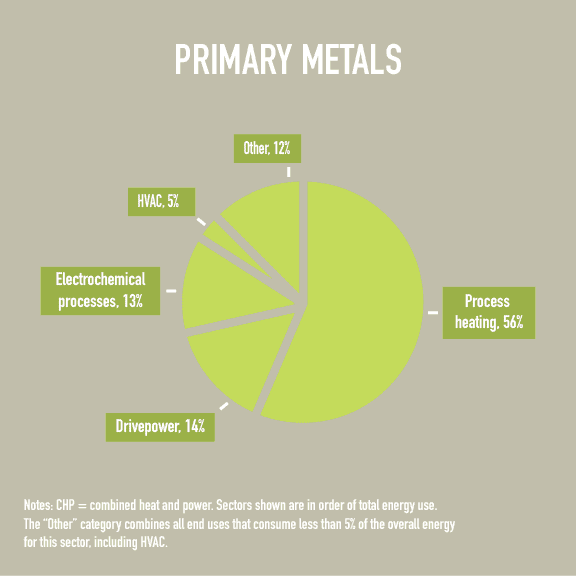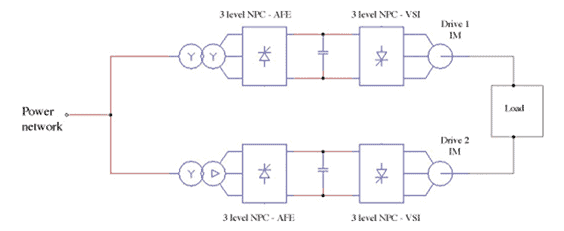Within the primary metals industry, there are four main energy consumers: process heating, electrochemical processes, drivepower and HVAC. Although manufacturing is largely considered one industry, once broken down, there are actually many types of manufacturing that have differing energy needs. Below, we break down the four energy consumers of the primary metals industry:

1. Process Heating
Process heating is the largest energy consumer, as manufacturing is done in iron and steel mills, that utilize heat to homogenize and process raw materials into finished products. Manufacturers typically use heat to smelt and/or refine ferrous and nonferrous metals from ore, pig or scrap.
Within process heating, Electric arc furnaces consume vast amounts of energy to melt down raw materials. Hot strip mills used for casting and rolling also consume a lot of energy while shaping metals. Heat is important to the manufacturing process of primary metals as it’s needed to manipulate materials into products for consumers.
2. Drivepower
Drivepower refers to the power being used to run systems such as motors, hydraulics, etc. It converts electrical or hydraulic power into mechanical motion (typically rotary) to drive systems that manufacture metal.
Downhill conveyors are often used in the mining industry to substitute transportation of ore from the mine to another part of the mining process. As the system continuously regenerates, it needs a drive power that permits this, while improving overall efficiency. Conveyers are typically contracted to transport 5800 ton/h of mineral, with the mine stock pile being around 1300m above the concentrator plant level. While the average inclination is 11%, it can be as much as 24% in some places. The AC-DC-AC drive feed induction motors that then supervise the conveyor, as shown in the diagram below.

3. Electrochemical Processes
Electrochemical processing is used within the primary metals industry to machine products that are difficult or impossible to create through conventional machining. The specific process used is Precise Electrochemical Machining, known as PECM or pECM. PECM is an extremely accurate technique that is capable of machining any electrically conductive material. The technology uses electrolysis to manipulate the metal into the desired end product. During the process, the metal work piece is dissolved (Machining) locally through electricity (Electro) and chemistry (Chemical) until it reaches the required complex 3D end shape.
One of PCEM’s many material application capabilities is that thin, fragile, sections of metal can be safely machined and it can also handle microstructures.
4. HVAC
HVAC is used within the primary metals industry to regulate hazardous materials caused by the mining process. HVAC can efficiently remove dust and prevent workers from coming into contact with respirable silica dust. This is an extremely important function of metal manufacturing as respirable silica dust can cause death if left untreated. The most efficient use of HVAC is to integrate it as an integral part of filtration and pressurization systems. Enclosed cabs of mining equipment have very poor airflow so HVAC is vital to rectifying this and ensuring the safety of manufacturing workers.
At EnergyLink, we have extensive knowledge of how to reduce heating and cooling usage, as well as manage electrical costs. Doing an energy project with us will see the overall cost to do these processes go down. While the percentages may stay the same, the bottom line will benefit from an energy project.






